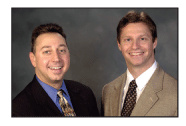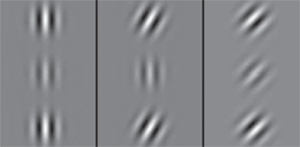 The goal of “Therapeutic Review” always has been to enhance our colleagues’ understanding of ocular disorders and their clinical management.
The goal of “Therapeutic Review” always has been to enhance our colleagues’ understanding of ocular disorders and their clinical management.
Typically, we discuss a particular pathological entity, such as macular degeneration or bacterial keratitis, and the current or emerging therapies available to combat the given condition.
Generally, we have steered clear of visual disorders like amblyopia, myopia and presbyopia in this column––frankly, because most optometrists no longer consider these areas to be within the realm of therapeutics. Over time, ocular conditions that typically are managed with lenses and prisms have become dissociated from those that are treated with medications. Nonetheless, these fundamental areas of vision care remain at the core of optometry and indeed represent a significant portion of our day-to-day activity in clinical practice.
With that in mind, we were highly interested to learn of a new technology that seeks to address visual concerns with an unconventional approach––the Revital-Vision Training System. Based in Lawrence, Kans., RevitalVision provides a unique product intended to enhance vision in a variety of conditions without the use of lenses, medications or surgery. Instead, this technology employs computer-based, neural visual therapy (NVT) in an attempt to improve functional visual performance for patients who desire an alternative to spectacles or refractive surgery.
Show Me the Data!
The science behind Revital-Vision is quite intriguing and dates back more than 20 years.1,2 It relies on the visual and cortical impact of Gabor patches, which are sinusoidal gratings located within a Gaussian envelope that are often used as psychophysical stimuli. RevitalVision uses a series of grouped Gabor patches presented in succession at specific, individually designed frequencies, spatial arrangements, contrast levels, orientations and exposure durations to stimulate the visual centers within the cortex.
Potential applications for this type of treatment include incipient presbyopia, low myopia, post-surgical (e.g., LASIK or cataract extraction) residual refractive error and sports vision, according to the company. But, at this time, adult amblyopia is the only clinical entity for which this technology has FDA approval.3
In the most widely referenced study using the device, researchers evaluated 54 adult amblyopic patients who were randomized to receive either NVT or placebo vision training.3 Each participant underwent two to four weekly treatment sessions that lasted approximately 30 minutes each (mean of 45 +/-15 sessions). At the study’s conclusion, visual acuity improved by an average of 2.5 lines (to 20/30) in the treatment group.3

Examples of Gabor patches, which are used in the RevitalVision programs.
No improvement was observed in the control group. Similarly, a commensurate increase in contrast sensitivity function was observed in treatment group participants. Encouragingly, the improvements in acuity and contrast sensitivity were sustained after 12 months.4
Additional publications have documented visual improvement in patients with low myopia and early presbyopia who used RevitalVision’s NVT techniques.5-8 Although none of these studies had particularly large patient populations, the results were notable. Subjects achieved between one and three lines of increased uncorrected visual acuity (logMAR scale) at both distance and near after using NVT.5-7
While refractive error remained essentially unchanged in these subjects, visual performance––including contrast sensitivity––demonstrated significant enhancement. The authors suggested that this form of therapy might be a desirable option for patients who are dissatisfied with their uncorrected acuity following refractive surgery.7,8 Likewise, they suggested that RevitalVision may appeal to emerging presbyopes who are discouraged by the thought of spectacle correction.7,8
How Does it Work?
The RevitalVision Training System is designed for in-home use on a patient’s personal computer. Each program is customized to match the patient’s pace and visual ability.
Depending upon the product selected, sessions are completed three to four times per week, and are monitored remotely by the company. Each of the 20 sessions takes an average of 20 to 30 minutes to complete for myopia or presbyopia training. The amblyopia package is a bit more intensive, however, consisting of 40 sessions that last approximately 40 minutes each.
Throughout the training sessions, users are presented with a series of visual tasks designed to improve efficiency and visual processing. Software measures the contrast threshold of a Gabor target with the presence of flankers (e.g., Gabor patches on either side of a target Gabor). After exposure to two short, successive visual displays, the patient identifies which display contains three Gabors.
Specialized algorithms analyze and continuously adjust the training sessions. The eye care provider measures contrast sensitivity and uncorrected visual acuity (both distance and near) at the initial consultation. This information is then entered into the system’s database, and a brief trial session serves to further identify the patient’s neural inefficiencies.
Once the preliminary program is generated, the patient downloads the RevitalVision software on his or her computer, and then may begin using the system at home. Then, upon completion of the treatment program, the prescribing eye care provider performs a final examination.
First Impressions
As you might expect, this new technology has been extremely polarizing. Conventional thinking suggests that refractive blur cannot be overcome without lenses or surgery. Likewise, we were all taught that amblyopia only could be effectively treated in childhood, before the visual system loses its inherent plasticity.
Some well-respected individuals in optometry, ophthalmology and vision science have embraced this new technology after witnessing its results first-hand. According to RevitalVision’s website, some early advocates include Richard L. Lindstrom, M.D., (Minneapolis, Minn.), John D. Hunkeler, M.D., Daniel S. Durrie, M.D., and Kelly F. Grosdidier, O.D. (all of Overland Park, Kans.).
A number of surgical practices now offer RevitalVision as an “alternative” option to spectacles, contact lenses, refractive surgery or surgical enhancements following LASIK.
Vision training has a checkered history in our profession. Will optometrists embrace this new concept? If the positive early results are borne out by additional data demonstrating long-term persistence of a therapeutic effect, it could offer a viable intervention for a group of patients whose needs might otherwise go unmet.
When managing patients’ visual needs, it’s important to remember that not everyone fits into our conventional treatment algorithms. Emerging technology continues to explore new avenues and opportunities. We owe it to our patients to remain open to possibilities beyond the tried-and-true, while also taking care to manage patient expectations appropriately.
Drs. Kabat and Sowka have no direct financial interest in any of the products mentioned.
1. Gabor D. Theory of communication. J Inst Elec Eng. 1946;93:429-52.
2. Polat U, Sagi D. Lateral interactions between spatial channels: suppression and facilitation revealed by lateral masking experiments. Vision Res. 1993 May;33(7):993-9.
3. Polat U, Ma-Naim T, Belkin M, Sagi D. Improving vision in adult amblyopia by perceptual learning. Proc Natl Acad Sci U S A. 2004 April 27; 101(17):6692-7.
4. Yalcin E, Serefhan F, Azizoglu S. Efficacy of neural vision therapy to enhance visual acuity and contrast sensitivity function in adult amblyopia. Presented at the European Society of Cataract & Refractive Surgeons Winter Meeting. February 18-20, 2011. Istanbul, Turkey.
5. Tan DT, Fong A. Efficacy of neural vision therapy to enhance contrast sensitivity function and visual acuity in low myopia. J Cataract Refract Surg. 2008 Apr;34(4):570-7.
6. Durrie D, McMinn PS. Computer-based primary visual cortex training for treatment of low myopia and early presbyopia. Trans Am Ophthalmol Soc. 2007;105:132-40.
7. Lim KL, Fam HB. NeuroVision treatment for low myopia following LASIK regression. J Refract Surg. 2006 Apr;22(4):406-8.
8. Waring GO, Durrie DS. NeuroLASIK - Can surgeons improve LASIK outcomes by training the visual cortex? Cataract Refract Surg Today. 2008 Aug;52-3.

